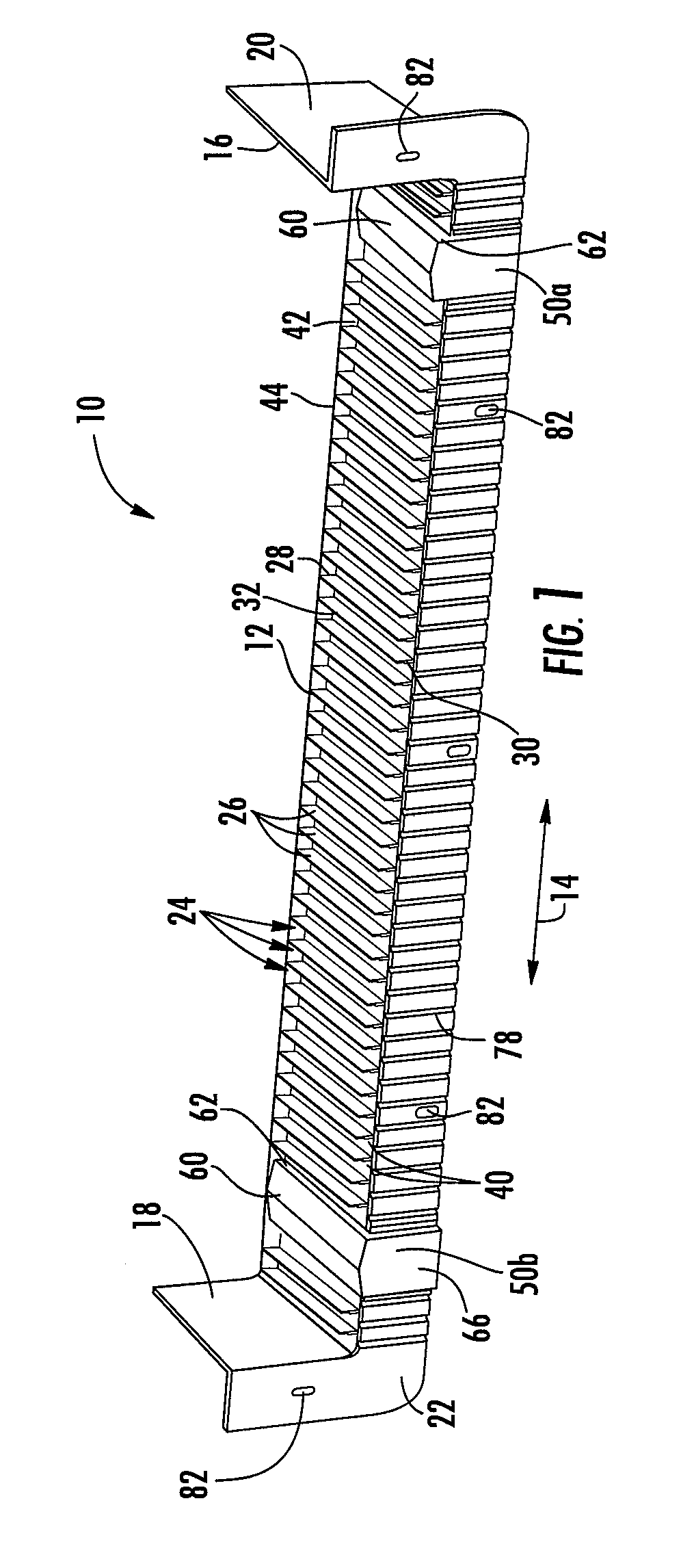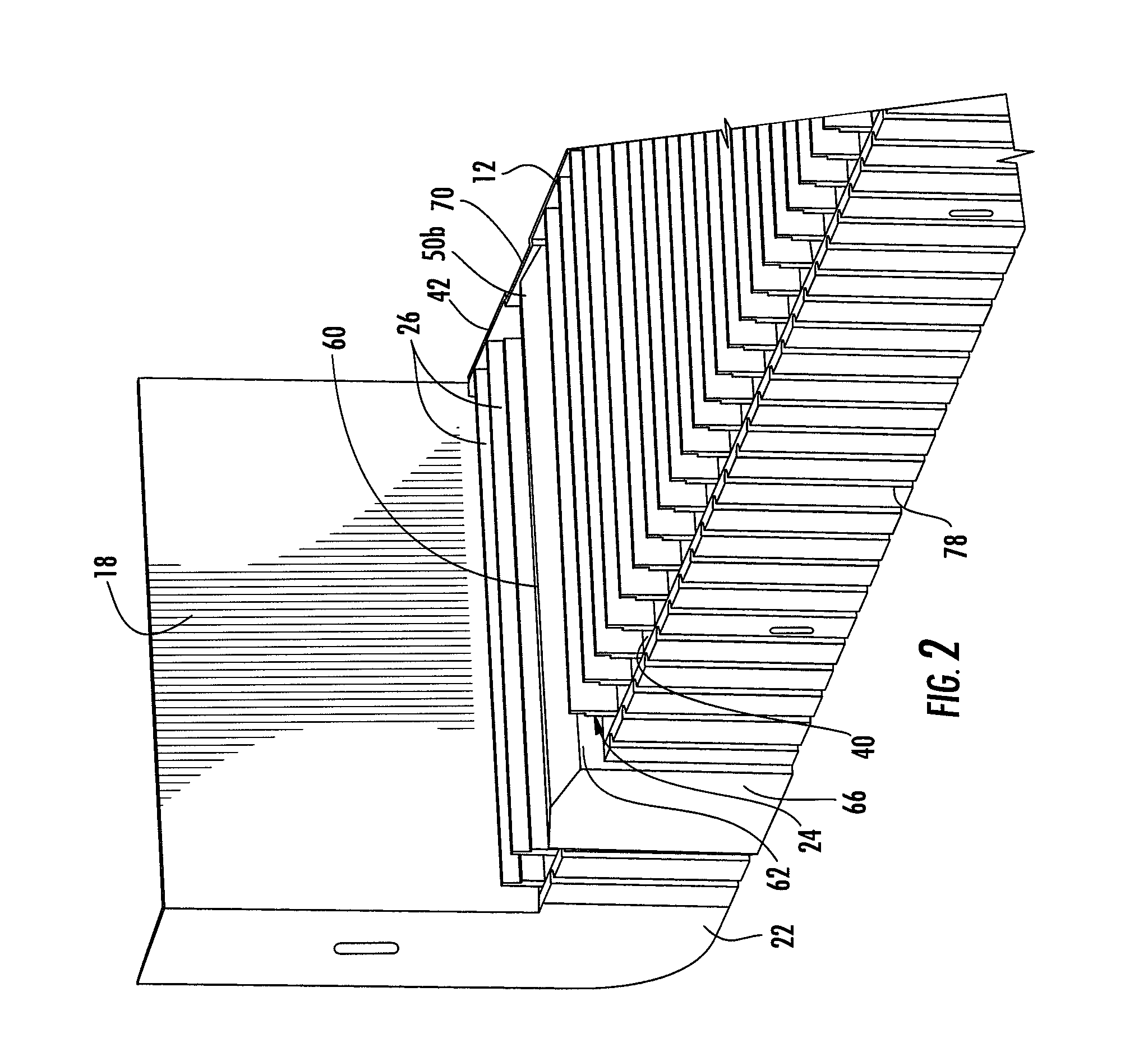Sill Flashing and Associated Method
a technology of sliding and associated methods, which is applied in the field of sliding flashing, can solve the problems of window leaking water to the sill, window damage, and the normal waterproof barrier of the barrier material on the inner surface of the rough opening, and achieve the effect of facilitating the installation of the barrier material
- Summary
- Abstract
- Description
- Claims
- Application Information
AI Technical Summary
Benefits of technology
Problems solved by technology
Method used
Image
Examples
Embodiment Construction
[0041]The present invention now will be described more fully hereinafter with reference to the accompanying drawings, in which preferred embodiments of the invention are shown. This invention may, however, be embodied in many different forms and should not be construed as limited to the embodiments set forth herein; rather, these embodiments are provided so that this disclosure will be thorough and complete, and will fully convey the scope of the invention to those skilled in the art. Like numbers refer to like elements throughout.
[0042]Referring to the drawings and, in particular, to FIG. 1, there is shown a sill flashing 10 according to one embodiment of the present invention. The sill flashing 10 is structured to be installed in an opening 110 in a wall 112 in connection with the installation of a window 114 (FIGS. 9-11) or other portal in the opening 110 so that the sill flashing 10 directs water out of the opening 110, e.g., to the outside of a building. Accordingly, the flashi...
PUM
| Property | Measurement | Unit |
|---|---|---|
| angle | aaaaa | aaaaa |
| length | aaaaa | aaaaa |
| size | aaaaa | aaaaa |
Abstract
Description
Claims
Application Information
 Login to View More
Login to View More - R&D
- Intellectual Property
- Life Sciences
- Materials
- Tech Scout
- Unparalleled Data Quality
- Higher Quality Content
- 60% Fewer Hallucinations
Browse by: Latest US Patents, China's latest patents, Technical Efficacy Thesaurus, Application Domain, Technology Topic, Popular Technical Reports.
© 2025 PatSnap. All rights reserved.Legal|Privacy policy|Modern Slavery Act Transparency Statement|Sitemap|About US| Contact US: help@patsnap.com



